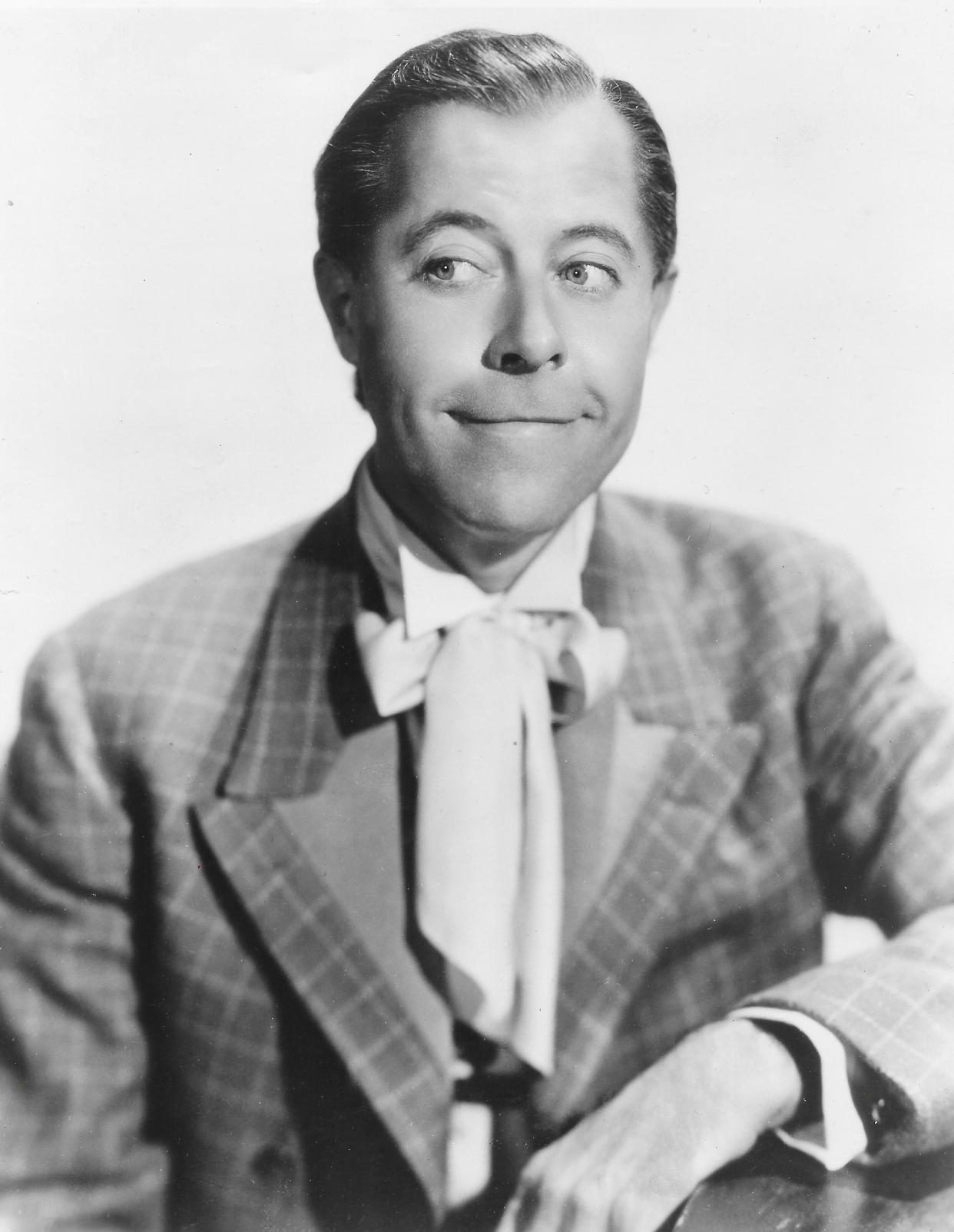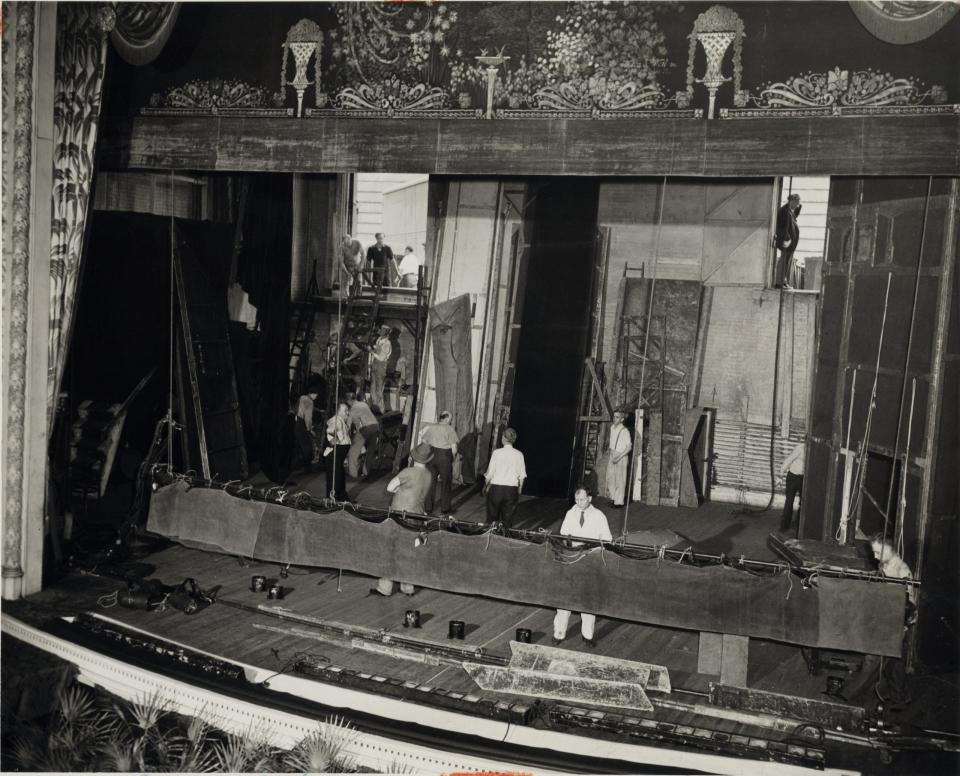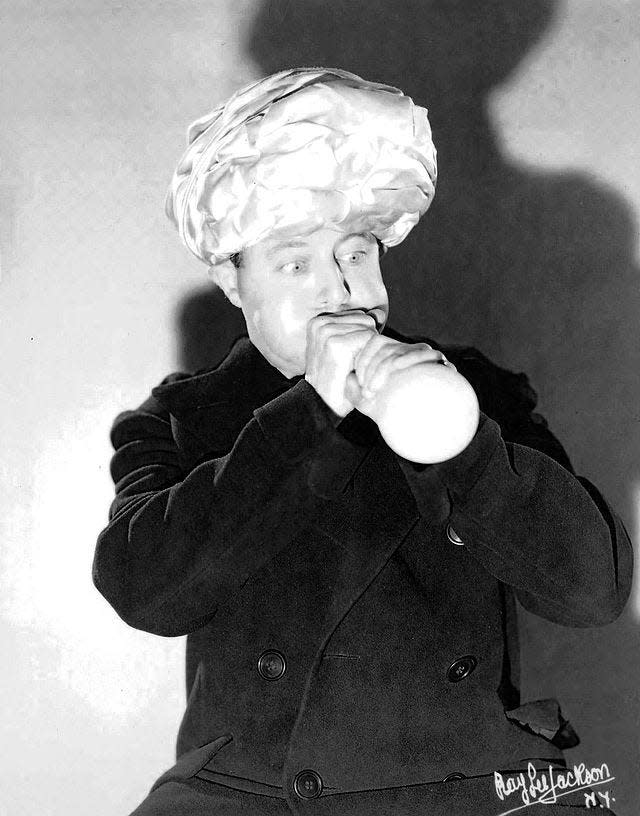Local history: Famous comedy routine originated in Akron

You’ve probably never heard of Joe Cook, but that’s OK. He never heard of you either.
The American comedian was a huge star in the 1920s and 1930s. Although he starred in theater, radio and movies, he is all but forgotten today. And that’s a shame because no one could imitate four Hawaiians quite like Cook.
Let us explain.
In the first half of the 20th century, a strange phrase crept into the American vernacular: “But can he imitate four Hawaiians?” The absurd retort usually followed an unrelated statement. Like: “He is a handsome fellow. But can he imitate four Hawaiians?”
The non sequitur was a reference to Cook’s famous routine in vaudeville, a monologue that originated in Akron.
Billed as “One Man Vaudeville,” the Indiana native was a manic presence onstage. With gleaming eyes, a devilish smile and freakish agility, Cook would walk a tightrope, ride a unicycle, juggle clubs, play a ukulele, perform magic tricks, sing a song and tell stories that went nowhere — all in a 15-minute set.
“Joe Cook is certainly one of the musical theater’s three geniuses,” columnist Walter Winchell once noted. “I can’t at the moment think of the other two.”
“You either like Joe Cook or you don’t, but upon your feeling in the matter depends whether or not you shall marry my daughter,” humorist Robert Benchley wrote.
Writer Donald Ogden Stewart hailed Cook as “a man who would stop at nothing and frequently did.”
Audiences took delight in Cook’s double-talk monologues where he said little in as many words as possible.
“Ladies and gentlemen, I haven’t got much to say, but I will say this: That there is really nothing to say except that very little remains to be said,” Cook said. “Of course, on the other hand, let me say that while I have nothing further to say, the following might be said: Namely, that there is nothing more to say.”
The “Four Hawaiians” was another bit of nonsense.
“I’ll give an imitation of four Hawaiians,” Cook told audiences.
“This is one,” he said before whistling.
“This is another,” he said before plucking a ukulele.
“And this is the third,” he said before tapping a foot.
“I could imitate four Hawaiians just as easily, but I’ll tell you why I don’t.”
Then he would offer a convoluted explanation that varied from place to place.
For example: “You see, I bought a horse for $50, and it turned out to be a running horse. They offered me $15,000 for it, and I took it. I built a house for the $15,000, and when it was finished, a neighbor offered me $100,000 for it. He said my house was right where he wanted to dig a well. So, I took the $100,000 to set it up. I invested $100,000 in peanuts, and that year, there was a peanut famine, so I sold the peanuts for $350,000. Now why should a man with $350,000 bother to imitate four Hawaiians?”
Whew. Get all that?

Cook created the original “Four Hawaiians” routine while performing at the Colonial Theatre at 48-50 E. Mill St. in downtown Akron. The baroque theater, which opened in 1902, was an L-shaped building that wrapped around The Gothic at High and Mill streets. Decorated in gold leaf and ivory, the 1,600-seat Colonial featured a gallery, lower flower and two balconies. It was razed in 1970.
Although Cook performed at the Colonial several times before 1920, the vaudeville show Nov. 6-8, 1911, was probably when he developed his famous routine. He was 21 years old and fourth on the bill between a minstrel act and a vocal duo.
Performances were at 2:30, 7:15 and 9 p.m. Monday through Wednesday with tickets ranging from 10 to 30 cents. The “Four Hawaiians” premiered at a matinee.
“I conceived it when playing Akron, Ohio, on the Sullivan and Considine circuit,” Cook recalled years later. “I was doing a bit of ad-libbing while playing the uke. Then I said, ‘I will now imitate two Hawaiians.’ So I monkeyed around, playing and tapping with my foot and giving ’em goofy business heavy, and I saw they were falling for it.
“Then I said, ‘I could imitate four Hawaiians, but I won’t.’ Then I realized I was in a jam. ‘Gee,’ I thought. ‘What did I say that for? Now I’ve got to tell ’em why I don’t do four Hawaiians.’
“So I said: ‘Ladies and gentlemen, you have just seen me imitate two Hawaiians, so why should I do four Hawaiians and show up those who can do only two Hawaiians and possibly be the cause of losing their positions? It’s a principle with me.’
“Even the orchestra leader laughed, which is tops on any circuit.”
The Beacon Journal praised the show as an “exceptionally good bill” and noted: “Joe Cook, versatile comedian, made good with his audience.”

Cook turned the “Four Hawaiians” into the centerpiece of his act.
He credited Akron with being the first to laugh, explaining: “I have often thought that had I tried that out, say, in Providence, Rochester or Albany, notorious for their deadpan audiences, it might have flopped and I’d never have tried it again. You see, it depends solely on the first time. If a gag fails to register, you drop it.”
Cook vaulted from vaudeville to Broadway in “The Earl Carroll Vanities” in 1923 and also starred in the musicals “Rain or Shine” (1928) and “Fine and Dandy” (1930), which director Frank Capra turned into a feature-length film. He wrote the book “Why I Will Not Imitate Four Hawaiians” published by Simon & Schuster, which critics hailed as “a gorgeous adventure in insanity” and “an utterly mad, irresponsible, bewildering, side-splitting yarn.”
In the mid-1930s, he played the zany character Joe Widget in comedy shorts distributed by Twentieth Century Fox. The humor was like the Marx Brothers crossed with the Three Stooges, but with no brothers and one stooge.
Cook appeared in one last feature-length film, “Arizona Mahoney” (1936), distributed by Paramount, before leaving Hollywood. He turned to network radio, hosting variety shows and sharing a microphone with Rudy Vallee and other stars.
From time to time, he dusted off his vaudeville act, amusing new audiences with his madcap wit. When Cook lived on a 26-acre estate at a resort lake in New Jersey, he named his speedboat “Four Hawaiians.”
In 1942, Cook shocked the entertainment industry when he announced that he had Parkinson’s disease and would retire from show business.
It was a slow, steady decline. He lived with the disease for 17 years before he died at age 69 in 1959, leaving behind his wife and four children. The obituary mentioned the “Four Hawaiians” and Akron.

Entertainment historians have theorized that Cook isn’t as well known today because he retired before the age of television. Vaudeville contemporaries like Milton Berle, Jack Benny and George Burns became superstars while Cook faded into obscurity.
Akron residents didn’t know that Cook made one last visit to town. In 1942, he hired a chauffeur to take him on a wistful farewell tour of the theaters where he had enjoyed his greatest triumphs.
There were no audiences. It was just Cook and his driver.
After rolling past Broadway theaters, he asked the chauffeur to steer him westward. The vehicle pulled up to Mill and High streets in downtown Akron.
“Joe saluted the Colonial from his car on that tour,” Beacon Journal reporter Ken Nichols recalled in 1965. “And perhaps he said his last goodbyes there, where he found them, to the four Hawaiians.”
Mark J. Price can be reached at mprice@thebeaconjournal.com
Oops! Classic bloopers from the collection of Mark J. Price
Vintage photos: 50 memorable Cleveland TV personalities
This article originally appeared on Akron Beacon Journal: Local history: Famous comedy routine originated in Akron

